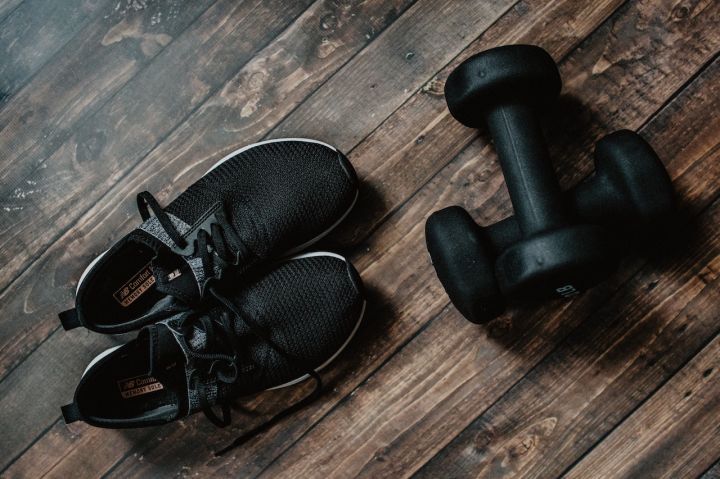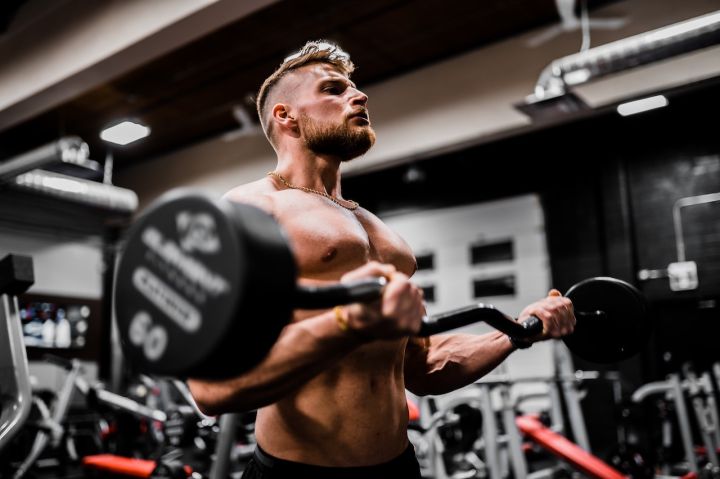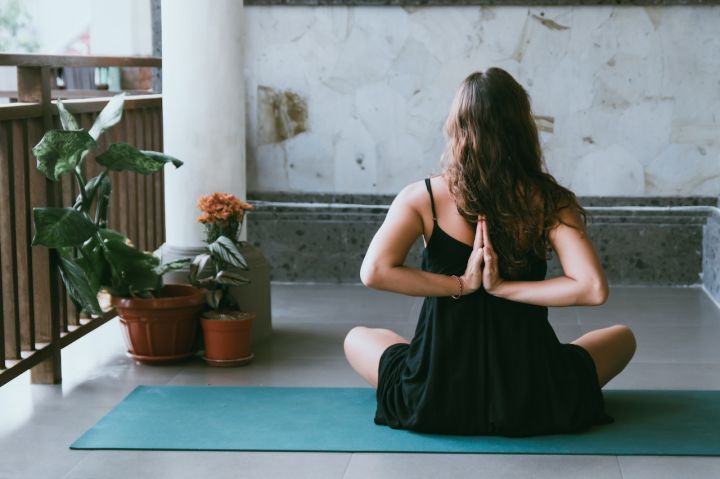back training, which movement do you like best?
Each muscle area needs to be stimulated by the movement and the angle of training, below we will show you the two best movements to train each muscle.

you can build up your training programme by choosing one movement from each category according to the programme below. Areas that are falling behind can be added with additional movements to train specifically. Either way, a full understanding of which movement trains which back muscles will help shape the body (especially the v-shape), thickness and width.
Note: Many of the movements mentioned below are not isolated, but emphasise certain areas of the back muscles.

area 1: Upper external latissimus dorsi
choose movements that can be performed with a wide grip, especially larger than shoulder width, which helps develop the muscles that shape the v-shape. This movement will usually be pulled from above the head or perpendicular to the body.
Best movements: Pull-ups (wide grip), overhead barbell row (wide grip)
1. Pull-ups (wide grip)
hold the bar with a square hand. Fully extend your arms, relax your shoulders and fully extend your latissimus dorsi at the bottom of the movement. As you pull upwards, imagine your elbows extending out to the sides and pulling down on your elbows to lift yourself up while contracting your latissimus dorsi. Pull up as far as possible to fully stimulate the latissimus dorsi. If you can't do it all the way, consider getting an assistant to help or using pull-up assistance equipment.

target tip: To emphasise the upper/outer latissimus dorsi and the large circular muscles at the bottom of the movement, squeeze the scapulae together as you fully extend the arms.
2. Prone barbell row (wide grip)
do not stand on a flat bench or platform to increase range of motion; this is more likely to round the back at the lowest point of the movement. If you need a greater range of motion, choose to use a lighter barbell piece rather than trying to balance on a flat bench. Using a wider-than-shoulder-width grip allows you to keep your elbows out to the sides and pull them up as far as possible to achieve a full contraction. Always maintain a bent knee position, which is better for getting up when using heavier weights, but this requires the help of other muscle groups.

target cue: To target the lateral latissimus dorsi and the large circular muscle, pull the barbell towards the upper abdomen.
Zone 2: Lower latissimus dorsi
use reverse grip movements and narrow grip pull-ups/pulldowns to emphasise the lower latissimus dorsi region. Among the few single-joint latissimus dorsi movements, the straight-arm pull-down can also do this.
Best movements: Reverse grip pull-down, straight arm pull-down

1. Reverse grip pull down
choose a reverse hand position at shoulder width, this allows the elbows to be pulled back as far as possible to maximise stimulation of the back muscles. Keep your torso straight and arch your back slightly while fully extending your arms at the highest point of the movement. Keep the chest straight and flexed during the movement; this helps to focus more pressure on the back muscles. Pull the elbows down and back as far as possible until the barbell is close to the upper pectoral muscles. Squeeze the shoulder blades together at the top of the contraction.
Target cue: To focus the pressure on the lower latissimus dorsi muscles, keep the chest up and the back arched. As you pull the barbell down, pull it down to the lower chest for a better contraction.

2. Straight arm pull down
place the bar at a height above your head and stand one arm's length away from the bar throughout the movement (slightly bent at the elbow). Straighten the arms and pull down in an arc until the bar touches the upper thighs. Concentrate on feeling the movement of the latissimus dorsi; the arms should only act as a lever. The movement should be performed only at the shoulder joint.
Target tip: For optimal stimulation of the lower latissimus dorsi, do not stop when the bar touches the thighs - actually push the bar back into the thighs and squeeze the latissimus dorsi as hard as possible.
Zone 3: Middle back
choose a narrow, medium grip rowing movement. The row can be done by pulling the barbell, dumbbells or handles to the middle or sides of the body to add thickness to the back.
Best movements: Single arm dumbbell row, narrow grip seated rope row

1. One-arm dumbbell row
leaning forward at the waist, place your right knee and right hand on a flat bench with your left foot flat on the floor, holding a dumbbell in your left hand, arms naturally down, and leaning your body slightly forward. Pull the dumbbell towards your hips with your elbows close to the side of your body. Keeping your back flat and your abs tight, lift your elbows as high as possible. At the top of the movement, squeeze the shoulder blades together and then return the barbell to the starting position along the same path. Repeat and then swap arms.
Target cue: At the lowest point of the movement, hold the dumbbell with the hand slightly inclined towards the front of the shoulder; pull the dumbbell up and back as you perform the movement.

2. Narrow grip seated rope row
keep your knees slightly bent to reduce the strain on them and maintain better balance. Some people believe that leaning forward gives a greater range of motion, but keeping the torso straight will work the mid-back more and also minimise stress on the lower back. Keep a slight arch in the lower back at all times. Pull the shoulders and elbows back as far as possible so that the bar touches the abdomen.
Target cue: Hold the top contraction for one to two seconds and squeeze the shoulder blades for optimal stimulation.

zone 4: Lower back
bending movements at the waist (not the hips, which work the gluteus maximus and thighs) work the muscles of the lower back, a key area for preventing lower back pain.
Best movements: Back raises, straight-legged hard pulls
1. Back raises
cross your arms over your chest or behind your head as you sit on a bench (this is more difficult); alternatively, you can place a dumbbell piece on your chest for added strength. Bend as slowly as you can at the waist. Contract your lower back muscles to get up and return to the starting position. Don't use explosive force and avoid getting up too high; contrary to what some people say, it's not good to overextend your back.

targeted cue: Use the back extension bench to give full support to the hips. This will prevent hip movement and allow the force to be concentrated on the lower back muscles.
2. Straight leg hard pull
in the straight-legged hard pull the barbell is closer to the ground than in the romanian hard pull. The range of motion of the romanian pull is better for the lower back. Bend at the waist and push back on the gluteus maximus, the arms hold the barbell naturally down and the legs should be straight. Keep the lower back muscles contracted at all times as you resist the weight. Push forward at the hips as you rise. Stand up straight at the highest point of the movement and do not lean backwards. The barbell bar stops at the top of the thighs. As you rise, focus on stretching the back and hip muscles, not the arms.

goal tip: Allow the lower back to round slightly at the bottom of the movement as opposed to the romanian hard pull.
Build your own back workout
include movements that target all parts of the back in your workout. To build muscle, do 2-3 sets of 8-12 reps each after warm-up sets to build strength, use heavy weights with fewer reps (4-7 reps) for muscle tone and endurance, use lighter weights with more reps (15-25 reps)
a bulking programme to build the external width of the latissimus dorsi, while working all areas of the back, as shown in the chart below (excluding warm-up sets). Rest 1-2 minutes between each set.

movement/target muscle no. Of sets no. Of reps
pull-ups (wide grip)/external latissimus dorsi 3 12,10,8
prone barbell row/external latissimus dorsi 3 8,10,12
narrow grip seated rope row/mid back 3 8,10,12
reverse grip pull down/lower latissimus dorsi 3 12,10,8
back raise/lower back 3
after a detailed look at the back, do you find yourself concentrating more on the latissimus dorsi and spending very little energy on the lower and middle back areas?

the back is a whole and can only be improved in a balanced way if it is developed in a holistic way. Follow the training movements above and organise your back more rationally and i'm sure you'll reach your goals much faster.





